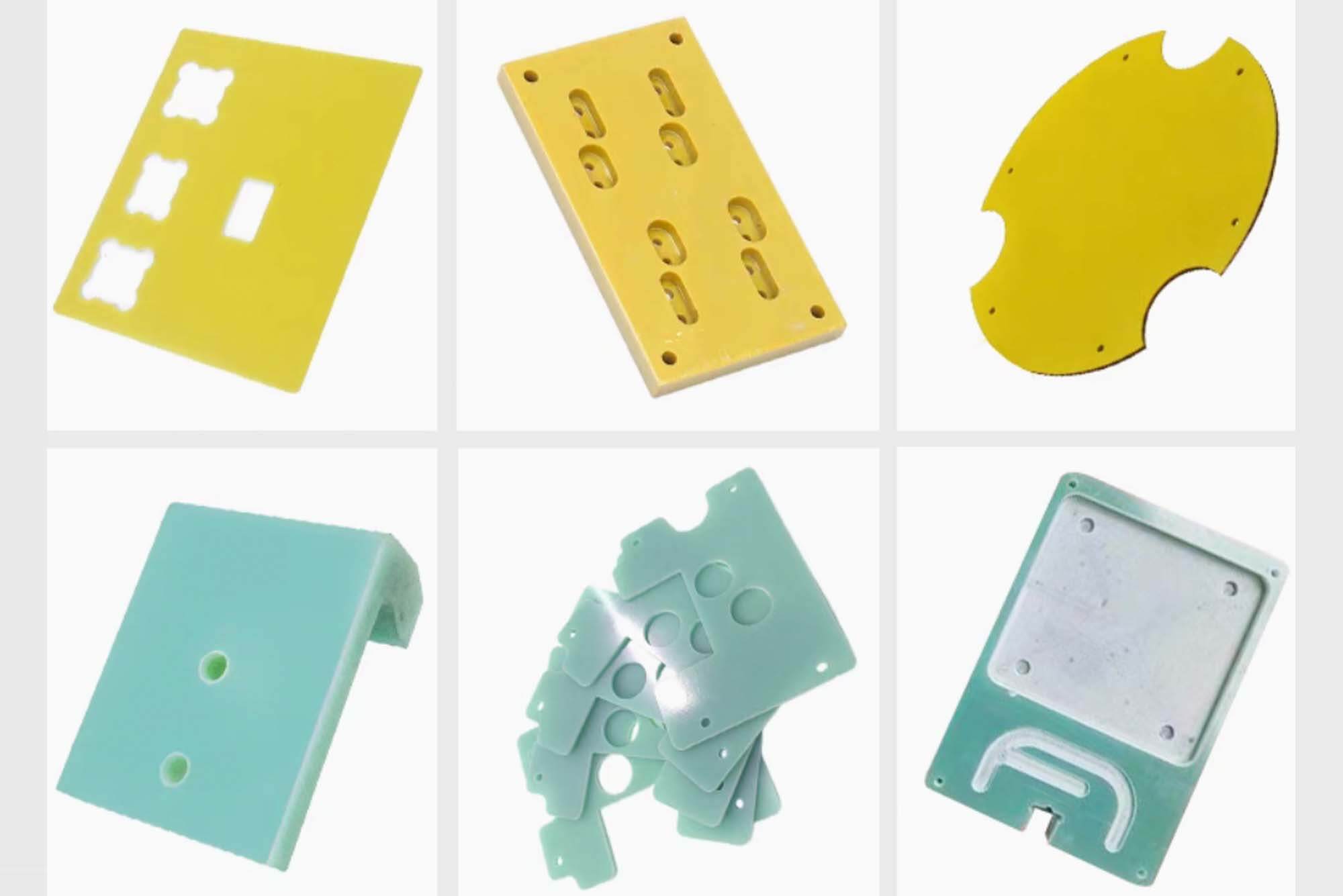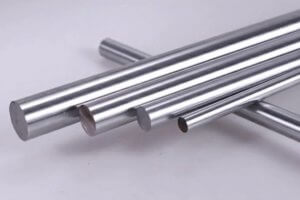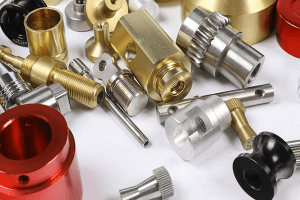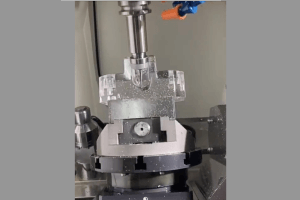Introduction
As industries evolve, the demand for lightweight, durable, and high-performance materials is on the rise. Among these, fiberglass resin stands out as a critical material in sectors ranging from aerospace to automotive manufacturing. But what makes fiberglass resin so attractive, and how does CNC machining play a pivotal role in shaping this versatile material?
In this comprehensive guide, we will dive deep into the world of fiberglass resin, exploring its characteristics, applications, and the challenges manufacturers face when working with this material using CNC machines. Whether you’re a seasoned CNC operator or a manufacturer looking to optimize your production process, this guide will provide valuable insights into working with fiberglass resin.
Basics of Fiberglass Resin
What is Fiberglass Resin?
Fiberglass resin is one of the most fascinating materials I’ve worked with in my career. When I first encountered it, I was struck by its unique combination of strength, lightweight properties, and versatility. At its core, fiberglass resin consists of two primary components: glass fibers and a resin matrix (typically polyester or epoxy). The glass fibers provide tensile strength, while the resin acts as a bonding agent to create a solid, durable composite material.
I still remember the first time I had to machine a complex aerospace component using fiberglass resin. The material was supposed to be lightweight, yet strong enough to withstand extreme conditions. The challenge wasn’t just the design, but figuring out how to manage the cutting process efficiently. The glass fibers in the resin can wear down tools quickly if the cutting conditions aren’t right, and the resin itself can sometimes melt or burn if the speed is too high.
Types of Fiberglass Resin
Fiberglass resin comes in different types, and choosing the right one for a project can make a world of difference. I learned this the hard way in an automotive project where I initially chose polyester resin, only to realize later that epoxy resin would have been a better choice due to its superior resistance to heat and chemicals.
- Polyester Resin: This is the more affordable option and is widely used for parts that don’t face extreme environmental conditions. I’ve worked with polyester resin in marine and automotive applications, where it’s an excellent choice for things like boat hulls and fenders.
- Epoxy Resin: Epoxy resin is more expensive but offers greater strength and chemical resistance. I used epoxy resin extensively during a project for an aerospace company, where high performance was essential. It provided superior bonding strength and resistance to thermal cycling, which was critical for the parts I was machining.
Key Characteristics of Fiberglass Resin
- Strength-to-Weight Ratio: One of the reasons fiberglass resin is used across so many industries, like aerospace and automotive, is its exceptional strength-to-weight ratio. I remember working on an aerospace project where we were tasked with creating lightweight, yet strong, parts. Fiberglass resin was the perfect choice. It delivered the required structural integrity while keeping the weight down.
- Durability: It’s no surprise that fiberglass resin is used for parts that need to withstand harsh environments. In my experience, parts made from fiberglass resin can endure moisture, heat, and chemical exposure, all without degrading quickly. I’ve seen this material used extensively in boat manufacturing, where it holds up beautifully against corrosion from saltwater.
- Thermal Stability: One challenge we faced in an automotive project was achieving parts that could resist high temperatures without losing strength. Fiberglass resin, especially epoxy, proved to be a game-changer due to its thermal stability. I’ve used it in brake systems and under-hood components without seeing any loss in material integrity.
- Electrical Insulation: The electrical insulation properties of fiberglass resin were crucial in a project I worked on for an electrical component manufacturer. We needed to prevent electrical interference in a highly sensitive piece of equipment. Fiberglass resin’s non-conductive properties ensured the parts functioned as intended.
Applications of Fiberglass Resin
In my experience, fiberglass resin is widely used in several high-demand sectors:
- Aerospace: I’ve seen firsthand how fiberglass resin is used for creating lightweight yet strong parts that can withstand extreme conditions. Whether it’s for aircraft wings or internal components, fiberglass resin plays a crucial role.
- Automotive: I’ve been involved in manufacturing high-performance car parts like bumpers and spoilers. Fiberglass resin’s ability to withstand heat and impact makes it a top choice for these applications.
- Construction: I’ve also worked on projects where fiberglass resin was used in building materials, such as panels and roofing, for both residential and commercial structures.
- Sports Equipment: From surfboards to bicycle frames, fiberglass resin offers the strength and durability required for equipment that’s exposed to stress and wear.
Why Is Fiberglass Resin Popular in CNC Machining?
Fiberglass resin has become one of the most sought-after materials in industries such as aerospace, automotive, and marine engineering. The reason? It combines the strength of metal with the lightweight benefits of plastics, making it ideal for a wide range of applications. In my own experience, when working on aerospace components, the strength-to-weight ratio of fiberglass resin was a game-changer, allowing us to achieve both structural integrity and reduced weight—essential for performance-critical applications like aircraft wings.
CNC Machining Challenges with Fiberglass Resin
Challenges of CNC Machining Fiberglass Resin
If you’ve worked with fiberglass resin in CNC machining, you probably know that it can be a challenging material to work with. I’ve spent hours perfecting my technique for machining fiberglass resin, and I can tell you that the material presents several unique challenges that you won’t encounter with metals or plastics. Here are a few of the main issues I’ve had to navigate:
Tool Wear
I can’t stress enough how important it is to choose the right tools when machining fiberglass resin. One of the first challenges I encountered was rapid tool wear. The glass fibers in the resin are hard and abrasive, so cutting tools can wear down very quickly, especially if you’re working with lower-quality tools or incorrect settings.
I remember working on a custom boat hull project where we used carbide end mills. Initially, I didn’t adjust the cutting parameters enough to handle the abrasive nature of fiberglass resin. After several hours of machining, the tool was nearly useless. It was a lesson I’ll never forget—always invest in quality carbide tools and make sure they’re coated for better durability.
Heat Build-Up
Another challenge I faced early on was heat build-up. Fiberglass resin tends to trap heat, which can lead to resin degradation, melting, and poor surface finish if not properly managed. I recall a situation where we were machining a batch of aerospace parts, and I didn’t account for the speed and feed rates properly. The heat accumulation was so high that it began to melt the resin, ruining the part.
To prevent this, I began experimenting with slower cutting speeds, intermittent cooling, and a higher feed rate. This method helped dissipate the heat better and improved both the surface finish and the tool life. Using the right coolant, specifically ones designed for composites, can also make a huge difference. I learned that water-based coolants don’t work as well with fiberglass resin compared to oil-based ones, which are more effective at managing heat.
Dimensional Accuracy
Fiberglass resin can sometimes be unpredictable when it comes to maintaining dimensional accuracy. The material can warp or distort as it cures, which means the part might not hold tolerances as expected. I’ve had to make multiple adjustments to machine settings when dealing with resin that wasn’t cured properly, and I’ve learned to always verify material stability before beginning the CNC machining process.
In one particular case, I was tasked with machining a set of structural parts for a construction project. Despite the initial dimensional accuracy during machining, I noticed some warping after the resin had fully cured. The solution was to create a more controlled environment for curing and machining, which dramatically improved the results.
Table Example: Cutting Parameters for Fiberglass Resin
| Tool Type | Cutting Speed (m/min) | Feed Rate (mm/min) | Coolant Type | Tool Life (hrs) |
|---|---|---|---|---|
| Carbide | 40-60 | 200-300 | Flood cooling | 10 |
| Diamond Coated | 30-50 | 150-250 | Dry cutting | 15 |
| High-Speed Steel | 20-40 | 100-200 | Mist cooling | 8 |
| Ceramic | 50-70 | 250-350 | Minimal coolant | 20 |
Conclusion
Fiberglass resin is a versatile and durable material, but machining it requires careful attention to detail and an understanding of its unique challenges. Throughout my experiences, I’ve come to appreciate the importance of optimizing both the CNC machine setup and the cutting tools used to process this material effectively. With the right approach, CNC machining of fiberglass resin can lead to highly efficient production of precision parts that meet the demanding requirements of industries such as aerospace, automotive, and construction.
Optimization Techniques for CNC Machining Fiberglass Resin
Tool Selection for CNC Machining
When I first started working with fiberglass resin, I made a critical mistake by not paying enough attention to tool selection. I remember one particular project where we were machining components for a military aircraft, and we were using standard HSS (high-speed steel) tools. The results were far from ideal—tools wore out quickly, and the parts had visible imperfections. This taught me that fiberglass resin requires specialized tools to handle its abrasive nature effectively.
In my experience, carbide tools have been the best for this type of machining. Their hardness and wear resistance allow for a smoother cut through the tough glass fibers in fiberglass resin. On a recent automotive project, I used carbide-tipped end mills to create lightweight, high-strength parts for a sports car chassis. The end results were precise, with excellent dimensional accuracy and minimal tool wear.
However, there’s another option worth mentioning: diamond-coated tools. These are more expensive, but I’ve found them invaluable in certain high-precision applications. For instance, when I was working on creating a series of aerospace parts, I used diamond-coated tools to achieve the fine surface finish needed for the structural components. Although the initial investment was higher, the increased tool life and reduced need for tool changes paid off in the long run, especially for high-volume production.
Optimizing Cutting Parameters
The first lesson I learned when CNC machining fiberglass resin was how crucial it is to adjust cutting parameters properly. I remember my early days, experimenting with feed rates and cutting speeds, which would often result in overheating and melting of the resin. I quickly realized that fiberglass resin tends to absorb heat faster than many metals, and if you don’t adjust for this, you can run into issues with resin degradation and poor part quality.
For instance, one time, I was machining a set of fiberglass resin panels for a marine application. The cutting speed was too high, and the tool wore out faster than expected. After analyzing the issue, I reduced the feed rate and cutting speed by about 30%, which resulted in a much smoother finish and less heat buildup. Not only did the tools last longer, but the surface finish was also significantly better.
It’s important to consider the cutting depth as well. For thicker parts, I’ve found that taking shallower passes reduces the likelihood of material deformation or resin burning. Using a conservative approach here helps maintain precision and improves the overall quality of the final product.
Cooling and Lubrication Techniques
Another key factor in machining fiberglass resin is cooling. Initially, I didn’t fully appreciate the importance of coolant until I saw firsthand how much heat builds up during machining. Fiberglass resin tends to trap heat around the tool, and without proper cooling, you risk damaging the material and your tools.
One technique I adopted was through-tool coolant, which I found to be more effective than traditional flood cooling. By directing coolant through the tool, I was able to better control the temperature at the cutting edge, which helped minimize resin degradation and prevent tool overheating. In a recent machining run for an automotive part, I used this system, and the result was a much more consistent finish and extended tool life.
Industry Applications of CNC Machining with Fiberglass Resin
Aerospace
One of the most rewarding projects I worked on was for the aerospace industry. The challenge was machining complex, lightweight, high-strength components for an aircraft wing. We used epoxy-based fiberglass resin for the parts due to its superior strength-to-weight ratio. The CNC process was complex, involving intricate tool paths and precise cuts to ensure the parts met the stringent quality standards.
In this project, I had to work closely with engineers to determine the optimal cutting parameters, as the resin’s properties could vary based on temperature and humidity. By carefully selecting the right tools, adjusting the cutting speed, and incorporating coolant effectively, we were able to achieve the desired results. The components passed all durability tests, and the feedback from the client was overwhelmingly positive.
Automotive
In automotive manufacturing, fiberglass resin plays a key role in producing parts that need to balance strength, weight, and cost. I’ve had extensive experience using polyester resin for automotive components such as body panels and structural parts. These parts need to withstand harsh environmental conditions, but also must be lightweight to improve fuel efficiency. CNC machining plays an essential role in shaping these materials with high precision, ensuring parts are both functional and cost-effective.
For one of my more recent projects, we were tasked with producing several custom body panels for a high-performance vehicle. Using CNC routers, we achieved precise cuts without compromising the integrity of the material. This allowed us to create lightweight yet durable components that fit seamlessly into the car’s design.
Conclusion and Key Takeaways
After years of working with fiberglass resin and CNC machining, I’ve learned that the right tools, settings, and material choices make all the difference. Whether you’re working on aerospace, automotive, or marine parts, the principles of optimizing tool selection, cutting parameters, and cooling methods are universal.
To recap:
- Tool Selection: Always choose carbide or diamond-coated tools for machining fiberglass resin. They last longer and provide better precision.
- Heat Management: Adjust cutting speeds and feed rates to minimize heat buildup. Proper coolant selection is crucial.
- Material Choice: Know when to use polyester resin vs. epoxy resin based on the strength and performance needs of your project.
CNC machining fiberglass resin may come with its set of challenges, but with the right knowledge and adjustments, it’s a highly rewarding material to work with. Whether you’re just starting or have years of experience, these optimization techniques will help you achieve the best results.
FAQ
1. What is fiberglass resin and how is it used in CNC machining?
Answer: Fiberglass resin is a composite material made from glass fibers and resin, often used for creating lightweight yet strong components. In CNC machining, it is used to produce parts for industries like aerospace, automotive, and marine. The resin acts as a matrix that holds the glass fibers together, giving the composite material its strength.
2. What are the different types of fiberglass resin used in CNC machining?
Answer: The two most common types of fiberglass resin are polyester resin and epoxy resin. Polyester resin is more affordable and used in applications like automotive parts, while epoxy resin is preferred in high-performance applications like aerospace due to its superior mechanical properties and resistance to environmental stress.
3. How do I choose the right fiberglass resin for my CNC machining project?
Answer: The choice of resin depends on the application requirements. For general-purpose, cost-effective projects, polyester resin may be sufficient. However, for parts that require higher strength, thermal stability, and chemical resistance, epoxy resin is the better choice. Consider factors like durability, cost, and specific performance needs when selecting the material.
4. What are the key challenges when CNC machining fiberglass resin?
Answer: The main challenges when machining fiberglass resin include tool wear, heat buildup, surface finish quality, and material brittleness. The glass fibers in the resin can quickly dull cutting tools, and the material’s tendency to generate heat can lead to poor surface finishes and resin degradation if not managed properly.
5. How can I reduce tool wear when machining fiberglass resin?
Answer: To reduce tool wear, I recommend using carbide or diamond-coated tools, as they offer superior durability when cutting fiberglass composites. It’s also important to adjust the cutting speed, feed rate, and cooling methods to minimize excessive friction and heat buildup during machining.
6. What cutting tools are best for CNC machining fiberglass resin?
Answer: Carbide tools are ideal for CNC machining fiberglass resin due to their hardness and durability. For more demanding applications, diamond-coated tools can provide even longer tool life.
7. Can I use water-based coolant for CNC machining fiberglass resin?
Answer: It’s generally better to use oil-based coolants as they provide better cooling for fiberglass resin. Water-based coolants may not effectively dissipate heat and can lead to poor surface finish.
8. Why does fiberglass resin cause rapid tool wear during CNC machining?
Answer: The glass fibers in fiberglass resin are abrasive and can quickly wear down cutting tools. High cutting speeds and improper tool selection can exacerbate this problem.
9. How can I improve surface finish when machining fiberglass resin?
Answer: To improve surface finish, reduce cutting speeds and adjust feed rates. Use specialized coatings on tools, and ensure your cooling system is working efficiently to prevent resin melting.
10. How does CNC machining impact the performance of fiberglass resin in different industries?
Answer: In industries like aerospace and automotive, CNC machining helps create precise, lightweight parts from fiberglass resin that maintain high strength and durability, improving overall component performance.
Other Articles You Might Enjoy
- Mastering CNC Drills for Precision in Composite Materials
CNC drilling is a critical process in modern manufacturing, particularly when working with composite materials. As industries like aerospace, automotive, and renewable energy continue to demand lightweight, high-strength components, achieving…
- Handling Composite Materials in CNC Turning A Straightforward Approach to Tools and Techniques
Composite materials have become increasingly important in modern manufacturing due to their superior strength-to-weight ratios and excellent resistance to corrosion and fatigue. As industries such as aerospace, automotive, and construction…
- From Tools to Coatings Efficient Milling Strategies for Composite CNC Machined Parts
Composite materials like Carbon Fiber Reinforced Polymer (CFRP) and Glass Fiber Reinforced Polymer (GFRP) have revolutionized industries such as aerospace, automotive, and marine. Their unique combination of strength, light weight,…
- Innovative CNC Machining for Complex Surgical Tools
Introduction to CNC Machining and its Significance in Surgical Tools Manufacturing CNC machining, an acronym for Computer Numerical Control machining, plays a significant role in the manufacturing world. Being an…
- Requirements for CNC Machining Parts
Preparation Work Complete the necessary preparation before machining, including process analysis, process route design, tool and fixture selection, and program compilation. online cnc machining service Operating Steps and Contents Start…









